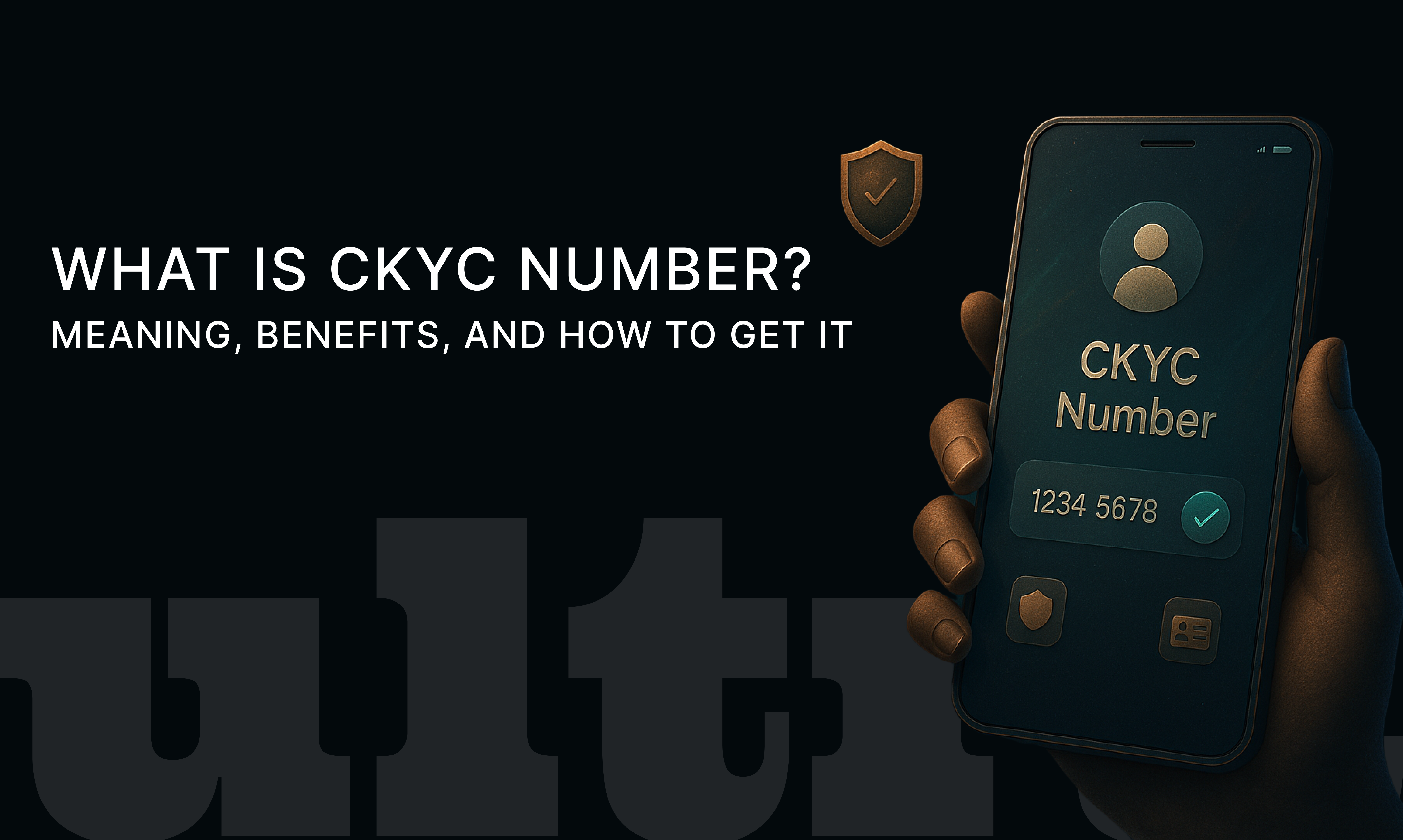What is CKYC Number? Meaning, Benefits, and How to Get It
18 July 2025 · Sachin Gadekar
A Complete Guide to CKYC Number, How It Works, and How to Download It

What is CKYC?
At Ultra, we aim to make your investment journey secure and hassle-free by explaining essential compliance requirements like CKYC. If you invest in mutual funds, open a Demat account, or buy bonds through regulated platforms, you’ve probably heard of the CKYC number.
But what exactly is CKYC, what does it mean, and why is it important? This article explains CKYC full form, its benefits, how to get your CKYC number, how to do CKYC login, and how to download your CKYC details.
CKYC stands for Central Know Your Customer. It is a centralized KYC system introduced by the Government of India through the Central Registry of Securitisation and Asset Reconstruction and Security Interest of India (CERSAI).
The idea is simple: instead of doing separate KYC every time you invest with a new bank, mutual fund, or financial institution, CKYC allows you to complete your KYC once and use it everywhere.
CKYC Number Meaning
When you complete your CKYC process through a financial service provider (like a bank or a broker), your information is stored in a central database managed by CERSAI. You are then assigned a unique 14-digit CKYC number that acts as a universal reference for your KYC records.
So, the CKYC number means you don’t have to repeat the KYC process every time you open a new investment account.
How CKYC Works in India
Single KYC Process: Complete KYC once with any SEBI-registered intermediary.
Central Registry: Your documents are stored in the CKYC database.
Unique CKYC ID: You receive a 14-digit CKYC number.
Reusability: Use the same CKYC number for banks, mutual funds, Demat accounts, or NBFCs.
This reduces paperwork and makes investing smoother.
How to Get CKYC Number
Getting your CKYC number is simple. Here’s how:
Visit a SEBI-registered intermediary: This could be your bank, broker, mutual fund house, or online investment platform like Ultra.
Fill the CKYC form: Provide basic details like name, address, PAN, and contact details.
Submit KYC documents: These include PAN card, Aadhaar card, and a passport-size photograph.
Verification: Your documents are verified and uploaded to the CKYC database by the intermediary.
Receive your CKYC Number: Once processed, you’ll receive a 14-digit CKYC number via email or SMS.
How to Know Your CKYC Number
You can find your CKYC number using any of these methods:
Check the welcome email or SMS from your bank or broker.
Some platforms display your CKYC number in your profile or dashboard.
You can check your CKYC status on CERSAI or by asking your intermediary.
CKYC Login – How Does It Work?
Many people search for CKYC login, but it’s important to know there is no direct public login to the CKYC database. Only authorized financial institutions and intermediaries can access or update your CKYC details.
You can, however, request a copy of your CKYC record through your intermediary or check your CKYC status online on certain platforms.
CKYC Number Download
If you need to download proof of your CKYC record:
Request it from the institution where you completed your CKYC.
Some brokers and banks allow you to download your CKYC certificate or confirmation slip from your online account.
Why CKYC is Important for Investors
Convenience: Do KYC once and invest anywhere.
Faster Transactions: No repeated KYC verification for every new product.
Compliance: Mandatory under SEBI and RBI guidelines.
Security: Your data is stored securely in a centralized system.
CKYC vs e-KYC
While both are KYC methods, e-KYC uses Aadhaar-based online verification and is usually quicker for one-time uses. CKYC, however, creates a permanent record that can be used multiple times across different financial products.
Common Issues with CKYC
CKYC not updated: Sometimes, your CKYC record may not get updated if documents are incomplete.
Multiple CKYC numbers: If you do KYC with multiple intermediaries without quoting your existing CKYC number, duplicate CKYC IDs can be generated. Always share your existing CKYC number.
Status mismatch: Sometimes the CKYC status may show as 'KYC under process'. Contact your intermediary to resolve it.
Final Thoughts
The CKYC number is your single point of KYC compliance for all your investments. Whether you’re starting with mutual funds, buying bonds, or opening a trading account on Ultra, CKYC makes the onboarding process smooth and paperless.
Always ensure your CKYC is up to date to avoid delays in transactions. If you’re unsure about your CKYC status, reach out to your bank or broker and keep your 14-digit CKYC number handy for future investments.
Stay informed with Ultra for more guides that simplify your investments and compliance.
FAQs on CKYC Number
Q1. What is CKYC?
CKYC stands for Central Know Your Customer. It’s a centralized KYC system that stores your KYC details securely for reuse across multiple institutions.
Q2. How do I get my CKYC number?
Submit your KYC documents through any SEBI-registered intermediary. Once verified, you’ll receive a unique 14-digit CKYC number.
Q3. How do I find my CKYC number?
Check your email or SMS from your bank/broker or ask your intermediary. Some portals may also show your CKYC status online.
Q4. Is there a CKYC login?
No, only authorized institutions can access the CKYC database. Individuals cannot log in directly.
Q5. Is CKYC mandatory for mutual funds?
Yes, CKYC is required for investing in mutual funds, opening Demat accounts, and other regulated financial transactions.